Welcome, wave chasers and sun seekers! Today, we’re diving into the vibrant waters of the Atlantic and beyond with our guide to the best surfing spots in Europe. Imagine this: thirteen coastal paradises where the waves whisper your name, and each beach tells its own salty tale of adventure. Are you ready to ride the surf with me?
As someone who has always dreamed of dancing atop the ocean’s rhythmic waves, the allure of surfing has been calling my name for as long as I can remember. Despite living in the landlocked beauty of Zagreb, the surf culture has always been a beacon for my adventurous spirit. That’s why I’m thrilled to finally turn my dreams into reality. I’m gearing up to join a renowned surf school headquartered right here near Zagreb. I’ve been following their sun-drenched exploits on social media for years, and soon, I’ll be joining them on a trip to Portugal, a hotspot for some of Europe’s best surfing experiences!
In this article, we’ll embark on a journey through Europe’s most exhilarating surfing spots, unveiling not only the sun-soaked sands and frothy peaks but also top-notch surf schools catering to everyone from beginners nervously waxing their first board to seasoned pros seeking their next big challenge. As you dive into these hidden coves and expansive bays, consider it the perfect start to your fitness journey, riding the waves toward a healthier, more adventurous lifestyle.
So, grab your board (or just your sense of adventure) and let’s catch these waves together! Whether you’re looking to carve up the seas or simply soak up the seaside atmosphere, these surfing spots promise unforgettable thrills and spills. Let’s make some memories where the land meets the sea in Europe’s most epic surf spots. Ready to dive in?
Ready to discover the ultimate surfer’s checklist? Here are the top 13 surfing spots across Europe, each offering its own unique blend of waves and breathtaking scenery:
- Supertubos, Peniche, Portugal
- Biarritz, France
- Bundoran, Ireland
- Thurso East, Scotland
- Watergate Bay, Cornwall, England
- Mundaka, Basque Country, Spain
- Hossegor, France
- Klitmøller, Denmark
- Ribeira d’Ilhas, Ericeira, Portugal
- Sennen Cove, Cornwall, England
- Praia do Amado, Algarve, Portugal
- Banzai Beach, Sardinia, Italy
- Balangan Beach, Bali, Indonesia
Each of these destinations promises thrilling waves and an unforgettable surfing adventure!
Now that you’ve seen the list, let’s dive deeper into what makes each of these surfing paradises a must-visit for your next aquatic adventure.
What are the Best Surfing Spots in Europe?
Europe isn’t just about historic cities and charming landscapes; it’s also a hotspot for some of the best surfing spots in the world. From the chilly waters of the North Sea to the sun-warmed swells of the Mediterranean, the continent offers a diverse array of waves for surfers of all levels. Whether you’re looking for a challenging break or a gentle wave to start your surfing journey, Europe’s coastlines will not disappoint. Let’s explore the top picks for where to catch the best waves.
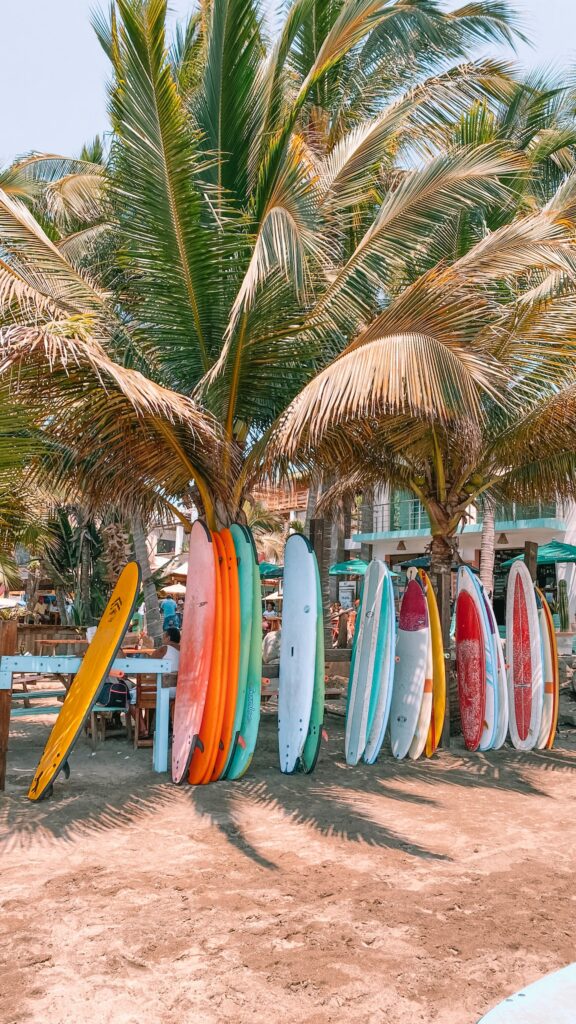
1. Supertubos, Peniche, Portugal
Supertubos in Peniche is often hailed as the crown jewel of Portuguese surfing and is indisputably one of the best surfing spots in Europe. Known for its powerful and fast barrels, Supertubos isn’t nicknamed the “European Pipeline” for nothing. This spot is renowned for hosting the annual Rip Curl Pro Portugal, attracting surfing professionals and enthusiasts from around the globe.
Location and Waves: Supertubos is located on the central coast of Portugal, just a short drive from Lisbon. The beach features hollow, tubular waves that can offer thrilling rides but are best suited for experienced surfers due to their speed and power.
Best Time to Surf: The prime time to visit Supertubos is during the autumn months, particularly from October to November, when the swells are most consistent, and the winds are favorable.
Practical Tips:
- Equipment: Make sure to bring a sturdy board that can handle powerful waves, and consider a thicker wetsuit, especially outside the summer months, as the water can be cool.
- Safety: Always stay aware of the strong currents and occasionally sharp seabed. It’s advisable to surf with a buddy and keep an eye on the tide schedules.
- Local Surf Schools: For beginners eager to get started or intermediate surfers looking to improve, there are several surf schools in Peniche. These schools offer lessons that can help you tackle smaller waves before attempting the might of Supertubos.
- Accommodation: Peniche has a variety of surf camps and hostels tailored to surfers, making it easy to meet fellow wave enthusiasts and share tips and experiences.
By keeping these points in mind, you can maximize your experience at one of the best surfing spots in Europe. Whether you’re watching from the shore or paddling out into the lineup, Supertubos promises an unforgettable surfing adventure.
2. Biarritz, France
Biarritz stands as a historic beacon among the surfing spots in Europe, often revered as the European birthplace of surfing. This chic seaside town not only boasts a vibrant cultural scene but also some of the best surfing spots in Europe, making it a popular destination for both beginners and seasoned surfers.
Location and Waves: Nestled on the Bay of Biscay in the French Basque Country, Biarritz offers a variety of waves that cater to all levels of surfers. The main beach, Grande Plage, tends to have gentler waves, ideal for beginners, while the Côte des Basques provides more challenging breaks for those looking to test their skills.
Best Time to Surf: The best surfing conditions in Biarritz can typically be found from late spring through to the fall, with the peak surf season occurring in September when the larger swells roll in.
Practical Tips:
- Equipment: If you’re traveling without your gear, there are numerous surf shops in Biarritz where you can rent boards and wetsuits. The water temperature can vary, so check the local surf forecast to choose the right wetsuit thickness.
- Safety: Biarritz’s beaches are well-patrolled, but it’s important to be mindful of the local surf etiquette and the areas designated for surfing to avoid crowded swimmer zones.
- Local Surf Schools: Biarritz is home to numerous surf schools offering professional instruction tailored to every skill level. Enrolling in one of these schools can provide valuable insights into the local wave conditions and safety tips.
- Accommodation: The town boasts a range of surf-friendly accommodations, from luxury hotels to cozy surf hostels that cater specifically to surfers looking to catch the perfect wave and relax after a day in the ocean.
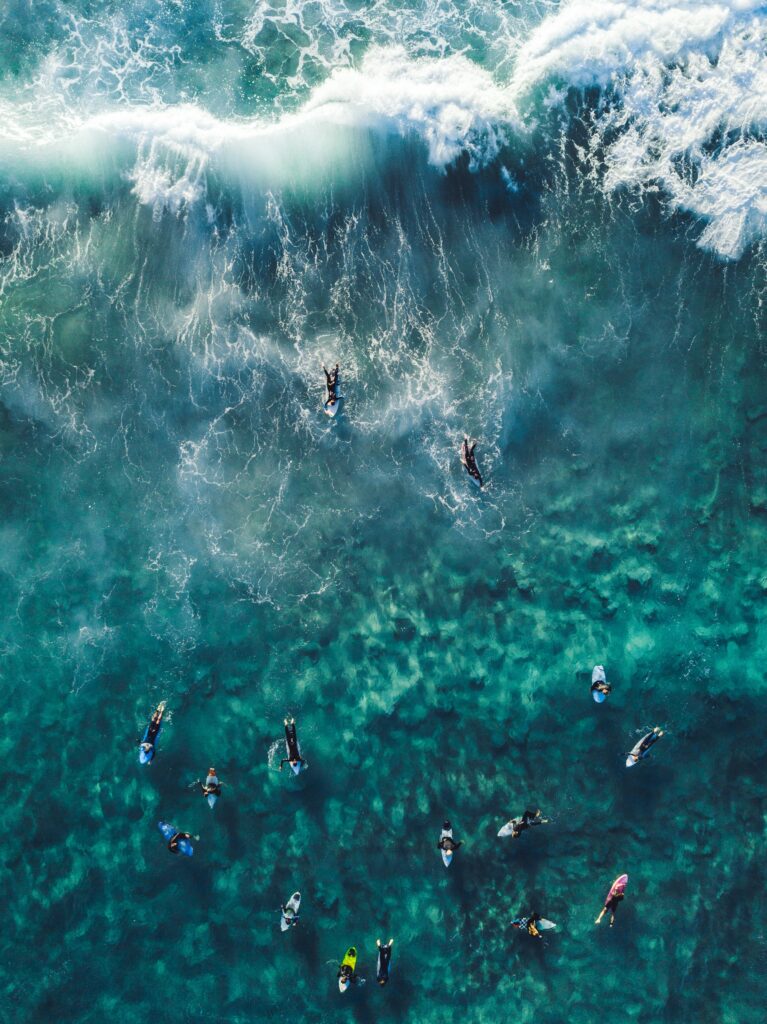
Biarritz not only offers some of the best surfing spots in Europe but also a glimpse into the surf culture that has shaped this picturesque town. Whether you’re paddling out into your first wave or carving up the surf like a pro, Biarritz delivers an exceptional European surfing adventure.
3. Bundoran, Ireland
Bundoran is a premier destination on the Irish coast, renowned as one of the best surfing spots in Europe. Its reputation in the surfing world is well-established, thanks to its consistent waves and the rugged, natural beauty that surrounds it. Often referred to as the “Surf Capital of Ireland,” Bundoran offers a vibrant surf scene that attracts surfers from across the globe.
Location and Waves: Bundoran is located in County Donegal and features a variety of surf breaks that can accommodate all skill levels, from gentle beach breaks ideal for beginners to the challenging reef breaks that seasoned surfers seek. The most famous wave here is the “Peak,” a world-class reef break known for its powerful, hollow waves.
Best Time to Surf: The peak surf season in Bundoran runs from September to November when the Atlantic swells are most robust. However, surfing is possible year-round, with winter offering some of the most exhilarating conditions for experienced surfers willing to brave the cold.
Practical Tips:
- Equipment: Due to the colder water, a good quality wetsuit (preferably 5mm) with boots, gloves, and a hood is essential to enjoy your surf session comfortably.
- Safety: Always check local surf reports for the current conditions. The waters here can be challenging, and the weather changes quickly, so it’s crucial to stay informed.
- Local Surf Schools: For those new to surfing or looking to improve their skills, Bundoran boasts several surf schools that provide lessons and equipment rentals. These schools are staffed by experienced surfers familiar with the best surfing spots in Europe and specifically the local conditions in Bundoran.
- Accommodation: The town offers a range of surf-oriented accommodations, from surf lodges and hostels that cater to surfers, to more traditional hotels and guesthouses. Many of these places offer drying rooms and secure storage for surf gear.
Bundoran not only stands out as one of the best surfing spots in Europe but also captures the spirit of Ireland’s surf culture. With its welcoming community and stunning coastal scenery, it’s a place where both the novice and the pro can find thrilling waves and an unforgettable surfing experience.
4. Thurso East, Scotland
Thurso East is a revered name in the cold-water surfing world and is celebrated as one of the best surfing spots in Europe. This Scottish gem is known for its consistent, high-quality waves and the dramatic landscapes that frame its shores. Its reputation extends globally, attracting surfers who are eager to challenge themselves against its renowned right-hand break.
Location and Waves: Located in the northernmost part of mainland Scotland, Thurso East offers a world-class reef break that produces fast and hollow waves, suitable for experienced surfers. The wave quality is such that it has hosted professional surfing competitions, including events on the World Qualifying Series.
Best Time to Surf: The optimal time to surf at Thurso East is during the spring and autumn months when the swells are most consistent. Winter also brings powerful waves, but surfers must be prepared for very cold conditions.
Practical Tips:
- Equipment: A high-quality, thick wetsuit (5mm to 6mm), gloves, boots, and a hood are essential to handle the chilly waters. Ensure your surfboard is suitable for cold water and powerful waves.
- Safety: The waves and currents at Thurso East can be intense, so it’s crucial to respect local surfing guidelines and check the weather and surf conditions before entering the water.
- Local Surf Schools: While Thurso itself has limited options for surf schools due to its remote location and challenging waves, nearby towns offer some surf schools and shops. These can provide guidance, gear rentals, and lessons, primarily aimed at those with some surfing experience.
- Accommodation: Thurso and surrounding areas offer a range of accommodation options, from cozy B&Bs to self-catering cottages, perfect for longer stays. Many cater specifically to surfers, offering spaces to store gear and relax after a day in the surf.
Thurso East not only stands out for its exceptional waves but also for its stark, breathtaking scenery, making it a must-visit for those looking to experience one of the best surfing spots in Europe. Whether you’re there to tackle the waves or to soak in the rugged beauty of Scotland’s coastline, Thurso East promises an unforgettable adventure.
5. Watergate Bay, Cornwall, England
Watergate Bay in Cornwall is a jewel among the UK’s surfing spots and is widely recognized as one of the best surfing spots in Europe. With its expansive sandy beach and consistent Atlantic swells, it’s a favored destination for surfers of all levels. Its picturesque setting, coupled with a friendly, relaxed vibe, makes it a perfect surf getaway.
Location and Waves: Situated on the north coast of Cornwall, Watergate Bay offers two miles of golden sand backed by cliffs and caves. The beach picks up plenty of swell and provides various conditions, from gentle waves for beginners to more challenging sections for advanced surfers.
Best Time to Surf: The surf at Watergate Bay is quite consistent throughout the year, but the best conditions are usually found in autumn and spring when the swells are most robust and the winds are favorable.
Practical Tips:
- Equipment: Renting gear is easy at Watergate Bay, with several surf shops offering the latest in surfboard and wetsuit technology. A good quality wetsuit is essential to cope with the cooler British waters.
- Safety: Always be mindful of the tides, as they can significantly affect the shape and quality of the waves. Check local tide charts and surf reports before heading out.
- Local Surf Schools: Watergate Bay is home to some of the best surf schools in Europe, offering lessons for every skill level. These schools provide professional instruction that can help you improve your technique and safety awareness in the water.
- Accommodation: The area around Watergate Bay caters well to surfers, with a variety of accommodation options ranging from luxury hotels to beachside apartments and surf lodges. Many places are geared towards the surf crowd, offering easy access to the beach and storage for surf gear.
Watergate Bay not only captivates with its natural beauty but also stands out as a premier location for surfing in the UK. Whether you’re a beginner taking your first lessons or an experienced surfer looking to catch a perfect wave, Watergate Bay offers a welcoming and exhilarating environment for anyone seeking the best surfing spots in Europe.
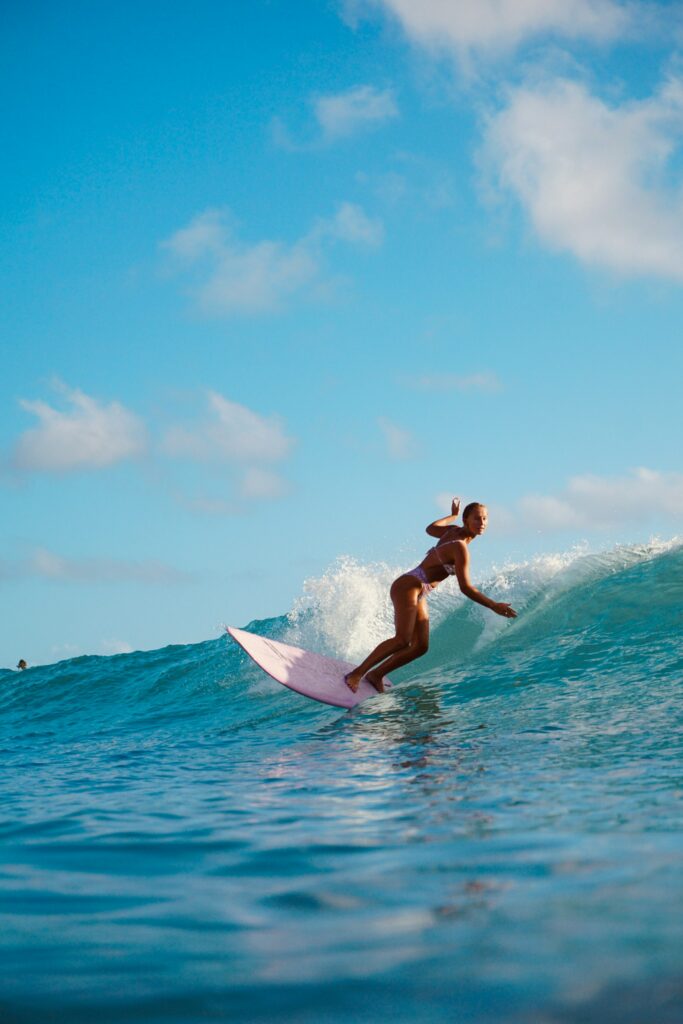
6. Mundaka, Basque Country, Spain
Mundaka is renowned for hosting one of the best left-hand waves in the world and is certainly one of the best surfing spots in Europe. Located in the picturesque Basque Country of northern Spain, this surf spot draws enthusiasts from all over the globe, eager to experience its famous barreling wave.
Location and Waves: Mundaka sits at the mouth of the Urdaibai estuary, which creates a unique sandbar that shapes its waves into perfect tubes. The wave at Mundaka is a fast, long, and hollow left-hander that can offer rides of up to 400 meters when conditions align.
Best Time to Surf: The optimal surf conditions at Mundaka occur from late autumn to early spring, when the Atlantic swells are at their strongest. This period ensures the best combination of wave size and wind direction for surfing.
Practical Tips:
- Equipment: Given the quality and sometimes size of the waves, a well-maintained, good-quality surfboard is crucial. Additionally, a wetsuit appropriate for the cooler temperatures of northern Spain during the peak surf seasons is recommended.
- Safety: The wave at Mundaka can be very powerful and is best suited for experienced surfers. It’s important to be aware of the local conditions, particularly the tides, as they greatly influence the formation of the wave.
- Local Surf Schools: While Mundaka itself is more of a destination for skilled surfers, nearby towns offer a range of surf schools that cater to all levels. These schools can provide beginner and intermediate surfers with the foundations needed before tackling more challenging waves like those at Mundaka.
- Accommodation: The area around Mundaka offers a variety of lodging options, from surf hostels to more luxurious hotels. Many of these are accustomed to accommodating surfers, providing gear storage and other surf-specific amenities.
Mundaka’s exceptional wave has cemented its status as a must-visit among the surfing spots in Europe. Not only does it attract professional surfers for its almost mythical waves, but it also offers a vibrant local culture rich with Basque traditions, making it a uniquely enriching experience for any surfer visiting one of the best surfing spots in Europe.
7. Hossegor, France
Hossegor is internationally celebrated as a surfing mecca, renowned for its powerful beach breaks and often referred to as one of the best surfing spots in Europe. Located in the southwest of France, along the Atlantic coast, Hossegor is a hub of surf culture and the go-to destination for many European surf competitions.
Location and Waves: Hossegor offers several surf spots along its coastline, with the most famous being La Gravière, known for its heavy barrels and fast waves that can challenge even the most experienced surfers. The sandy bottom here creates dynamic conditions that are ideal for advanced surfing.
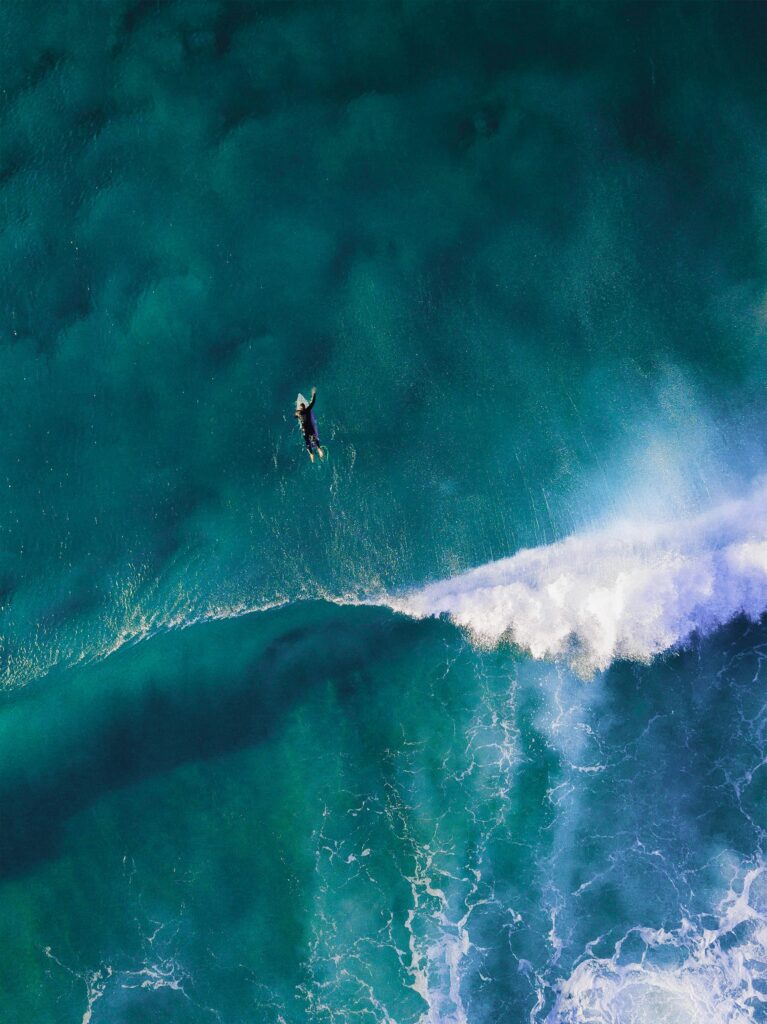
Best Time to Surf: The prime surfing season in Hossegor is from late summer through autumn, when the Atlantic swells are at their strongest and the beach breaks come alive. This period also coincides with the professional surfing contests that are held in the area.
Practical Tips:
- Equipment: A reliable board suited for powerful waves is essential, and a wetsuit is needed for most of the year due to the Atlantic’s cooler temperatures.
- Safety: Given the power of the waves and the changing sandbars, it’s crucial to stay updated on the local surf conditions and always surf within your limits.
- Local Surf Schools: There are numerous surf schools in Hossegor, offering courses and private lessons for surfers at all levels. These schools are well-versed in the local conditions and provide invaluable knowledge about surfing spots and safety.
- Accommodation: The town of Hossegor is fully geared towards surfers, with accommodations ranging from surf camps and hostels to more luxurious hotels. Many of these places offer easy beach access and facilities for storing surf equipment.
Hossegor’s reputation as one of the best surfing spots in Europe is well-deserved, with its consistent high-quality waves and vibrant surf scene. Whether you’re looking to watch some of the world’s best surfers compete or eager to test your own skills on its famous waves, Hossegor offers a thrilling surfing experience backed by a lively town atmosphere.
8. Klitmøller, Denmark
Klitmøller, affectionately known as “Cold Hawaii,” is one of the best surfing spots in Europe, particularly renowned within the windsurfing and kitesurfing communities. This small fishing village in Denmark has transformed into a surf hub due to its consistent wind conditions and welcoming waves.
Location and Waves: Situated on the northwest coast of Jutland, Klitmøller offers a variety of waves that cater to both surfers and windsurfers. The area is characterized by its broad beaches and the consistent winds that make it a prime location for wind-driven water sports.
Best Time to Surf: The surf in Klitmøller is good year-round, but the best conditions are typically found during the fall and winter months when the winds are stronger and the waves more frequent. Surfers who don’t mind the cold will find these months especially rewarding.
Practical Tips:
- Equipment: Due to the colder water temperatures, a thick wetsuit (at least 5mm), along with boots, gloves, and a hood, is essential for comfort and safety. Surf and windsurf gear can be rented from local shops if you don’t bring your own.
- Safety: The changing wind and wave conditions require constant vigilance. Beginners especially should consider surfing in the presence of more experienced surfers or take lessons to understand the unique conditions.
- Local Surf Schools: Klitmøller has several surf schools that offer lessons in surfing, windsurfing, and kitesurfing. These schools are equipped to teach the skills necessary for tackling the North Sea’s challenging conditions.
- Accommodation: The town caters well to surfers, with numerous options ranging from camping sites to more comfortable lodgings. Many facilities are geared towards surfers, providing spaces to clean and store equipment.
Klitmøller’s unique position in the surfing world as “Cold Hawaii” highlights its status as one of the best surfing spots in Europe. The town not only offers excellent conditions for wave and wind surfing but also boasts a strong community vibe that makes every visitor feel welcome. Whether you’re here to catch your first wave or ride the gusty winds, Klitmøller promises a memorable adventure in the surf.
9. Ribeira d’Ilhas, Ericeira, Portugal
Ribeira d’Ilhas in Ericeira is recognized globally not only as a UNESCO World Surfing Reserve but also as one of the best surfing spots in Europe. This iconic spot boasts a consistent break that attracts both professional and amateur surfers from around the world.
Location and Waves: Located just north of the town of Ericeira, Ribeira d’Ilhas is famed for its reliable right-hand point break that peels perfectly over a rocky seabed. This spot is suitable for surfers of all skill levels, offering long rides and excellent wave quality that can accommodate both high-performance surfing and relaxed longboarding.
Best Time to Surf: The waves at Ribeira d’Ilhas are most consistent from autumn to spring, with the biggest and best swells typically arriving in the winter months. During this time, the northwesterly swells hit the coast, creating ideal surfing conditions.
Practical Tips:
- Equipment: A good-quality wetsuit is necessary to handle the cooler water temperatures, especially during the winter months. Surfboard choice can vary depending on personal preference and the day’s conditions, but a variety of boards can be suited for the long, clean waves.
- Safety: Always check the local surf forecast before heading out, as the waves can become quite powerful, especially in winter. Be mindful of the rocky bottom and adhere to local surfing etiquette to ensure a safe experience for everyone.
- Local Surf Schools: There are numerous surf schools in Ericeira, given its status as one of the best surfing spots in Europe. These schools offer lessons and guided sessions at Ribeira d’Ilhas and other local breaks, catering to everyone from beginners to advanced surfers looking to refine their skills.
- Accommodation: Ericeira is a surf-centric town, with plenty of surf hostels, hotels, and private rentals available. Many accommodations are tailored to surfers, offering gear storage and proximity to various surfing spots.
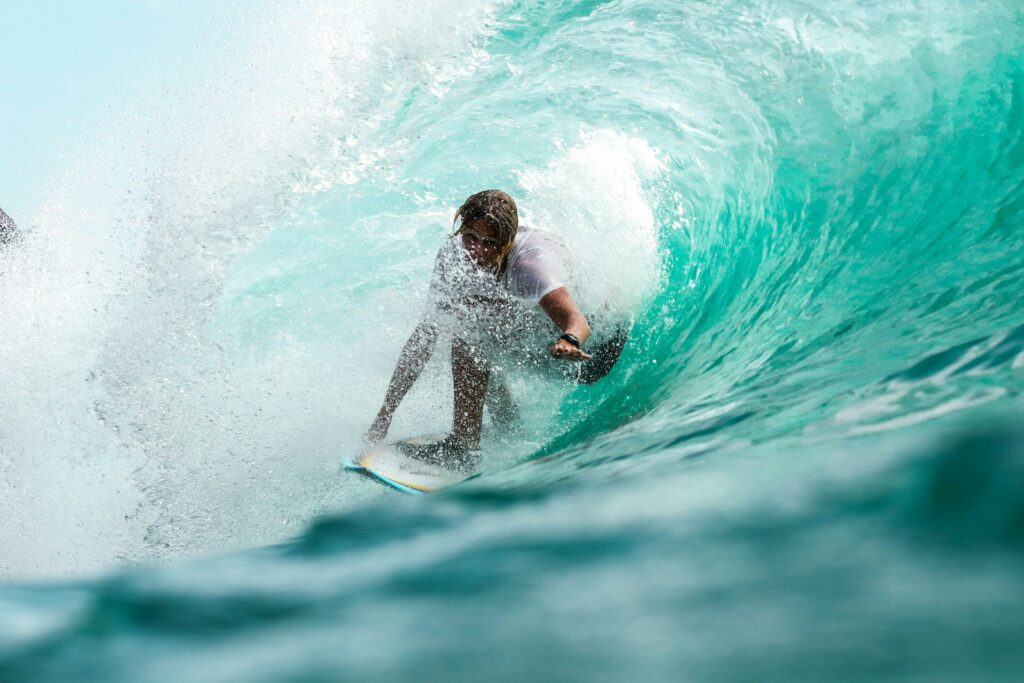
Ribeira d’Ilhas stands out not only for its scenic beauty and consistent waves but also as a cornerstone of the rich surfing culture in Ericeira. Whether you’re catching your first wave or seeking to master a new maneuver, Ribeira d’Ilhas offers an unparalleled surfing experience at one of the best surfing spots in Europe.
As the sun sets on our virtual surf safari across Europe’s best surfing spots, I can’t help but feel a sense of exhilaration and gratitude for the incredible waves we’ve encountered together. From the mighty barrels of Portugal to the windswept shores of Scotland, each destination has left an indelible mark on our surfing souls.
But our journey doesn’t end here, dear reader. As we hang up our wetsuits and bid adieu to the crashing waves, I encourage you to reflect on your own surfing aspirations. Have you ever dreamed of catching a wave in the Basque Country? Or perhaps mastering the art of longboarding in Cornwall’s iconic coves?
Whether you’re a seasoned surfer or a landlocked dreamer yearning to dip your toes into the world of surfing, there’s never been a better time to take the plunge. Consider booking a lesson at one of Europe’s renowned surf schools, where expert instructors await to guide you through the exhilarating highs and inevitable wipeouts of the surfing journey.
And as you embark on your own surfing odyssey, don’t forget to share your experiences with us. Have you visited any of the best surfing spots in Europe? What unforgettable moments did you encounter along the way? Drop us a comment below and let’s keep the conversation flowing.
Until our next wave rendezvous, may the surf gods bless you with endless sets and stoke-filled sessions. Ride on, fellow wave warriors, and may your adventures be as epic as the waves themselves!
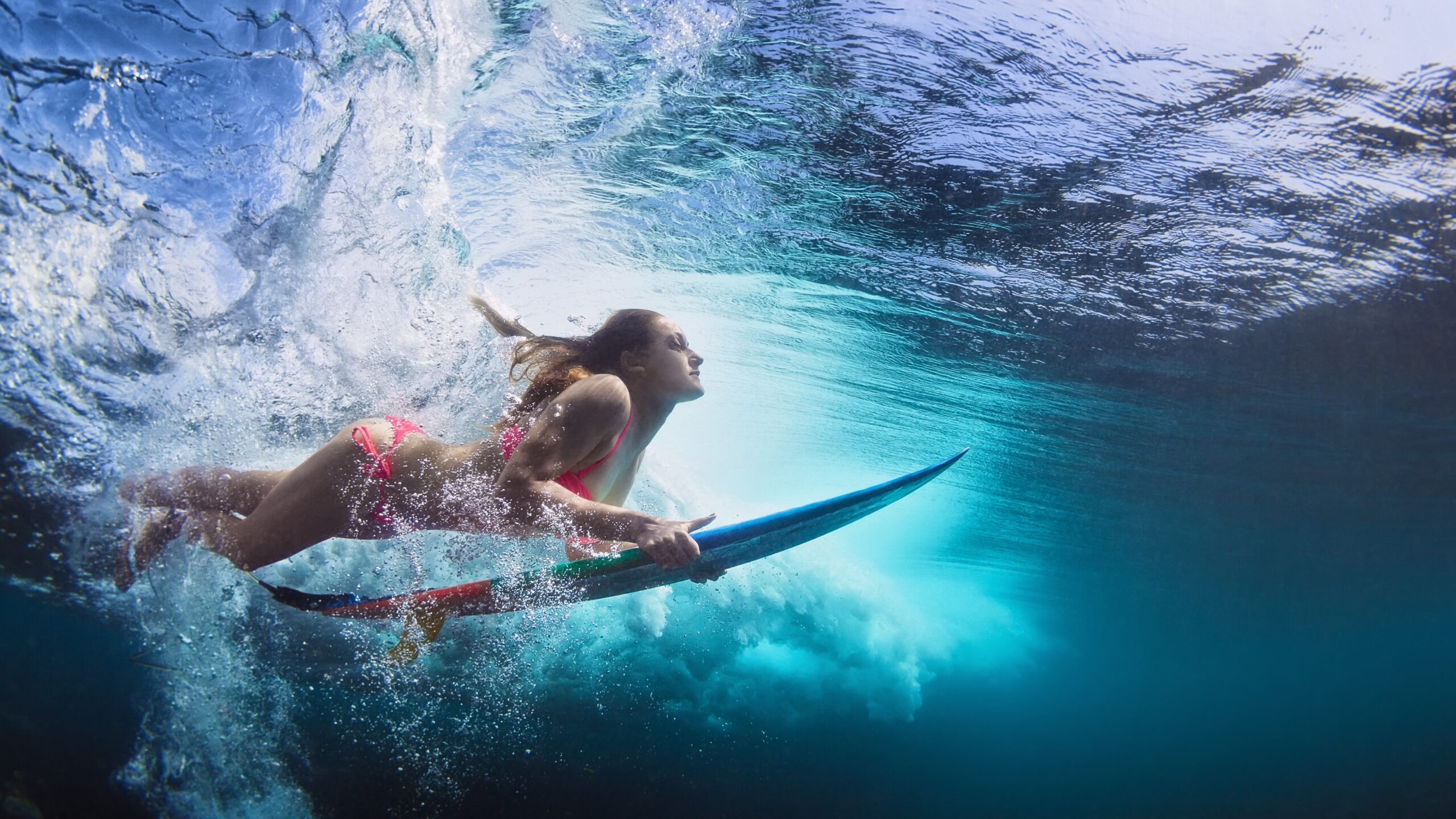
No comment